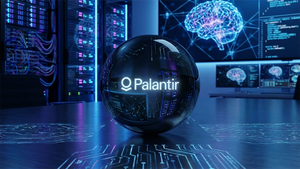Elon Musk, Tesla’s Ceo, Has Asked His Employees To Return To Work.
The CEO of Tesla, Elon Musk, has issued an order for all staff to return to work. It is in Musk’s self-interest to do what he believes will increase the long-term value of his company. Musk’s net worth is directly affected by the value of Tesla’s shares.
It seems sensible to have “all hands on deck” in the face of recessionary fears. However, if Tesla (NASDAQ: TSLA), +4.68% employees return to the office permanently, this would impose long-term expenses on the company.
Tesla CEO, Elon Musk is correct in the near term.
Goldman Sachs GS, +0.75 percent has encouraged its workers to return to the office, while Apple AAPL, +1.68% is planning for a hybrid WFH future. It’s important to weigh the potential productivity advantages of returning to the office against the potential improvements in employee well-being that come with greater autonomy.
General Motors GM, +1.57 percent, and Ford F, +2.51 percent, among others, are increasing their rivalry for Tesla’s market share in electric vehicle design and production. Tesla has to keep coming up with new ideas to stay competitive. And in-person encounters are better for this.
Academic cooperation and the design process have a lot in common. Any study endeavor must begin with a face-to-face meeting of the teams involved. Face-to-face engagement is more conducive to mentorship and impromptu conversations than Zoom for employees with existing ties. The use of Zoom by SpaceX personnel has been prohibited by Musk due to safety concerns.
Perhaps Musk views this as a method to reduce the size of the company’s personnel. To get people back to work, individuals who aren’t entirely “dedicated to the cause” may decide to leave. New orders from Musk may be used as a screening tool to see how much of a Tesla devotee they are like CEO Musk, who claims to work 80 hours a week.
In the wake of the story, Tesla’s stock has dropped. Because of his “very terrible feeling” about the economy, Elon Musk wants to reduce 10% of his workforce. What is good for Tesla may not be beneficial for many other enterprises. Employees in applied science at Tesla, which is still in its early stages, are largely men.
These folks, unlike the average American worker, do not have the same responsibilities at home. Young employees have a strong desire to return to work! To put it another way, the costs connected with the Tesla executive order do not have the same impact as they would if issued by a regular American corporation.
When it comes to this point, though, he gets it all wrong!
They ponder in terms of “what might have been” scenarios. What would happen if Tesla permitted its employees to work in a hybrid fashion? Is it possible that employee output may be even higher? For two reasons, I feel the answer is a resounding yes.
Employees at Tesla would be happier because they have more control over where they live and how they arrange their days, allowing Tesla to employ a bigger pool of workers. Workers are less likely to resign if they are happier with their jobs.
Tesla should be wary about a labor shortage and the potential loss of intellectual property to competitors. The superstar companies of the United States rely heavily on human capital. Employers may provide improved working conditions to attract and retain top people without having to pay large salaries or stock option premiums. WFH is a huge bonus to the work.
As a result, employees are more likely to be mentally and physically healthy, and less likely to experience burnout. Workplace flexibility and the option to spend more time where you choose to live will be appreciated by workers with specific at-home obligations and those with a special taste for leisure pastimes (i.e. skiers, surfers).
Austin, Texas, is home to Tesla’s corporate headquarters. Most of the employees that are required to come to the 13101 Harold Green Road location five days a week reside within an hour’s drive. Despite Austin’s many enticing qualities, the city’s housing market is too costly, and many prospective employees may not want to reside in the area.
Suppose Tesla employees could choose between a five-day work week and a two-day work week as part of their WFH schedules. Southwest Airlines now has 46 direct flights out of the Austin airport every day to various locations.
Even if Musk is right that face-to-face connection increases productivity, he should take into account the quality vs. quantity trade-off while doing so. The number of interactions will decrease, but the quality of interactions will increase if employees spend less time in the office. To encourage these interactions, mid-level managers will have a strong incentive to arrange group meetings. A/B testing may be used to improve this adjusting process.
Tesla has a gender and racial disparity problem, according to the 2020 Tesla Diversity Report. However, research suggests that companies with a more diversified leadership team are less likely to participate in the kind of “group thought” that leads to unexpected risks and missed opportunities.
WFH option and recruiting from a bigger pool of women and minorities would benefit Tesla if it wants to attract a more diverse team.
WFH and hybrid-WFH options will make Tesla a more prosperous company in the future. Elon Musk, a self-proclaimed workaholic, is much too intelligent to believe that his employees are just clones of him.
The post Elon Musk, Tesla’s Ceo, Has Asked His Employees To Return To Work. appeared first on Best Stocks.
More News
View More




Recent Quotes
View MoreQuotes delayed at least 20 minutes.
By accessing this page, you agree to the Privacy Policy and Terms Of Service.